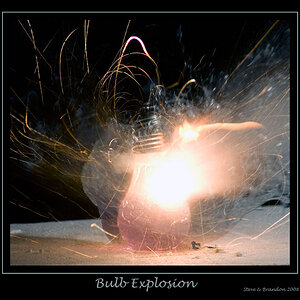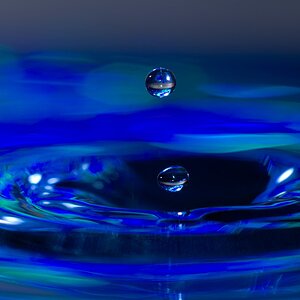vintagesnaps
Been spending a lot of time on here!
- Joined
- Jan 13, 2013
- Messages
- 9,119
- Reaction score
- 3,109
- Location
- US
- Can others edit my Photos
- Photos NOT OK to edit
I like the smell of the chemistry but I don't think I could tolerate it cooped up in a closed bathroom. I'd probably look into the louvered vents as suggested here. I've always used tongs (although have gotten my fingers/hand in the fixer particularly and rinse right away then stop and use soap and water) and have worn rubber gloves depending on what I was doing.
I've used a darkroom at a local university and they seemed to always have the ventilation running anytime I went in there (and the AC in the summer when I used it the most). I'd be up there maybe a couple of hours at a time, but that included going in and out to the classroom space to use the lightbox, squeegee and put prints on the drying rack, etc. (stopping to chat w/someone in one of the studios on the lower floor, getting a soft drink, etc. etc.).
I was thinking I don't know that I'd let a 3 year old in there til it had been open and aired out for some time after you use it, but I don't know how long that would need to be or what precautions might be necessary related to air quality.
I do know from my work in early intervention that in the city where I've worked there were documented learning problems among children at a particular school that was in an industrial area where air quality has been a concern (they since finally closed the school) so it seems that poor air quality can be detrimental to younger children. I also have worked with kids with lead poisoning (the children were showing delays in development) and it's known to cause brain damage - the concern with young children is due to their bodies being smaller than adults they are more affected by ingesting the same lead/breathing the same polluted air as adults in the family and so have more sensitivity to it. I don't know what impact fumes from photo chemistry might potentially have on a young child.
edit - Reread that this is an extra bathroom that you don't regularly use, so that might make for less of a concern and be easier to keep off limits as needed. But I'd still look into a fan/vent etc.
I've used a darkroom at a local university and they seemed to always have the ventilation running anytime I went in there (and the AC in the summer when I used it the most). I'd be up there maybe a couple of hours at a time, but that included going in and out to the classroom space to use the lightbox, squeegee and put prints on the drying rack, etc. (stopping to chat w/someone in one of the studios on the lower floor, getting a soft drink, etc. etc.).
I was thinking I don't know that I'd let a 3 year old in there til it had been open and aired out for some time after you use it, but I don't know how long that would need to be or what precautions might be necessary related to air quality.
I do know from my work in early intervention that in the city where I've worked there were documented learning problems among children at a particular school that was in an industrial area where air quality has been a concern (they since finally closed the school) so it seems that poor air quality can be detrimental to younger children. I also have worked with kids with lead poisoning (the children were showing delays in development) and it's known to cause brain damage - the concern with young children is due to their bodies being smaller than adults they are more affected by ingesting the same lead/breathing the same polluted air as adults in the family and so have more sensitivity to it. I don't know what impact fumes from photo chemistry might potentially have on a young child.
edit - Reread that this is an extra bathroom that you don't regularly use, so that might make for less of a concern and be easier to keep off limits as needed. But I'd still look into a fan/vent etc.
Last edited:



![[No title]](/data/xfmg/thumbnail/32/32809-afb9514cb8c02e2e41c241946e185251.jpg?1619735668)



![[No title]](/data/xfmg/thumbnail/37/37540-73002ccb910b97978bc38658622a34d3.jpg?1619738133)

![[No title]](/data/xfmg/thumbnail/41/41492-467958db3420bceb7ab410a12dcc681f.jpg?1619739819)

![[No title]](/data/xfmg/thumbnail/38/38741-89a8c6f9d841889783a4fae2b8c40902.jpg?1619738704)
![[No title]](/data/xfmg/thumbnail/38/38740-d1a7721cf77e9309a9b4a4829c65fdd4.jpg?1619738704)
